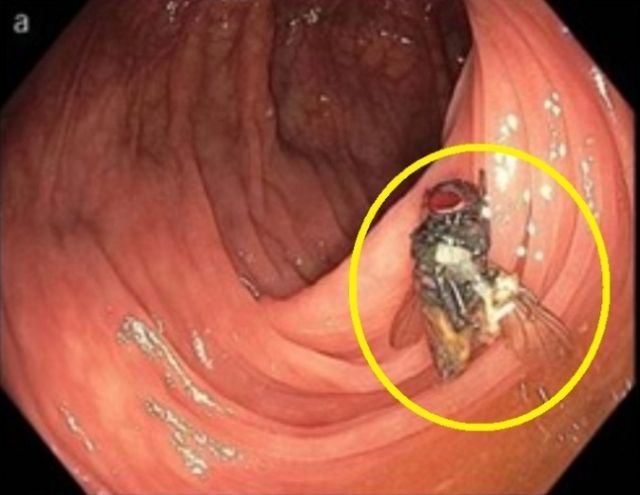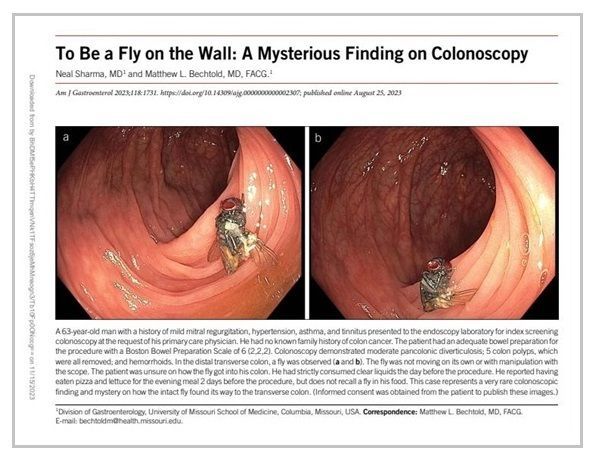A fly, seemingly alive and intact, was discovered inside the intestine of a patient undergoing a colonoscopy in the U.S., causing astonishment. How the fly entered the patient’s body and managed to reach the midpoint of the colon, avoiding stomach acid, remains a mystery.

According to international reports, including The Independent on the 23rd (local time), medical staff at a university hospital in Missouri, U.S., found a fully formed fly on the wall of the transverse colon, a part of the colon, during a colonoscopy of a man in his 60s, identified as Mr. A.
“The fly was stuck inside the patient’s colon,” said Matthew Bechtold, a professor of gastroenterology at the University of Missouri Hospital, who conducted the examination, in an interview with The Independent. “We stabbed it with a biopsy tool to check if it was dead, in the presence of other doctors. The fly was definitely dead,” he added.
Bechtold further noted, “If the fly had entered through the patient’s mouth, it would have been destroyed by stomach acid and would not have remained intact,” adding that “the discovery of the fly in the colon itself is a mystery.”
It remains unclear how the fly entered Mr. A’s body. Even if a fly that entered through the mouth managed to bypass the stomach acid and descend to the intestine, reaching the dark, curved midpoint of the colon would be a difficult task.
Mr. A himself had not experienced any unusual symptoms and had visited the hospital that day for a routine health checkup. He had not eaten any food the day before the colonoscopy, other than a bowel cleansing agent, and had only eaten pizza and lettuce two days before the examination.
Professor Bechtold suggested, “The only plausible explanation could be ‘myiasis’. There could have been fly eggs or larvae on the lettuce the patient ate before fasting, and these eggs could have survived and hatched in the intestine.”

Myiasis refers to infections caused by the invasion of fly larvae into the body. It usually occurs when flies lay eggs in inadequately treated wounds, but can also occur through fly eggs on fruits or vegetables. While it can occur in humans, it is mostly a disease experienced by animals like dogs and cats.
Cases like this, where an insect remains intact inside the human body, are rare. According to the U.S. Centers for Disease Control and Prevention (CDC), there was a case in 1984 where a living insect was found in the feces of a 12-month-old baby. Experts at the time speculated that the baby had eaten a banana with fly eggs, and the larvae survived in the stomach.
This case was also published in a recent issue of the *American Journal of Gastroenterology*. The medical team presented the case under the title “To Be a Fly on the Wall: A Mysterious Finding on Colonoscopy”.
<ⓒ투자가를 위한 경제콘텐츠 플랫폼, 아시아경제(www.asiae.co.kr) 무단전재 배포금지>















Most Commented